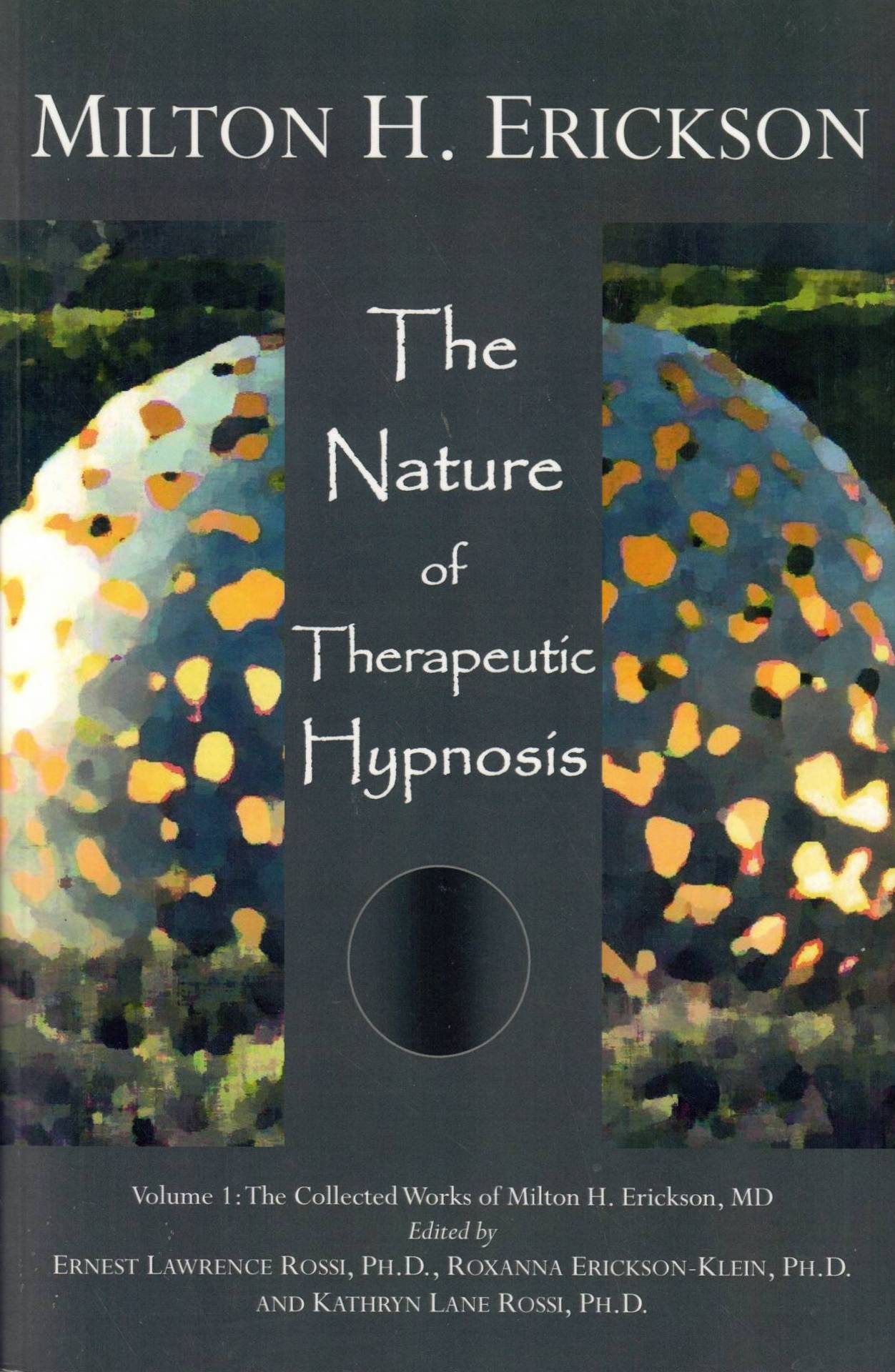Embody Serenity
The Nature of Therapeutic Hypnosis
Volume 1: Collected Works of Milton H. Erickson, MD
Ernest L. Rossi, PhD, Roxanna Erickson-Klein, PhD and Kathryn Rossi, PhD, Editors

This book is available through Amazon.com or The Milton H. Erickson Foundation Press.
The image of Erickson that’s emerged in the field is that of a therapeutic wizard possessed with an overwhelming personal power. “He wasn’t the kind of person you just sit down and chat with,” recalls Jeffrey Zeig. “He was consistently working, consistently being Milton Erickson, which entailed having the most profound experience he could with whomever he was sitting with. In that sense, he was constantly hypnotic, constantly therapeutic, constantly teaching.”
Perhaps this was because Erickson’s physical state necessitated the complete focus of all his faculties. Dyslexic, tone deaf, color blind, prone to vertigo and disorientation, stricken with polio at 17 and again at 51, he spent the last 13 years of his life (the period in which many of his well-known students first met him) painfully confined to a wheelchair. As he tried to model the flexibility and subtle verbal methods he’d spent a lifetime developing, he did so with partially paralyzed lips and a dislocated tongue. Yet, as Haley said, “The man worked 10 hours a day, six or seven days a week doing therapy… every weekend, he was either seeing patients or on the road teaching.” Zeig adds: “The thing that was so impressive about Erickson was the time and energy he was willing to put out. Once he took somebody as a patient, he’d, literally, do anything he possibly could to help that person. When you were a client of Erickson, you just felt he was totally focused on you.”
Erickson spent a half century developing an enormously subtle therapy of multi leveled pattern recognition that was almost totally at odds with the mainstream therapies of his day. “Maladies,” Erickson said, “whether psychogenic or organic, follow definite patterns of some sort, particularly in the field of psychogenic disorders. A disruption of this pattern can be a most therapeutic measure, and it often matters little how small the disruption is, if introduced early enough.”
He discovered that most of the “rules” of life prescribing human limitations were arbitrary beliefs, not facts. His study and mastery of hypnosis taught him that altered mental states and trance were very much a part of everyday functioning. “This understanding,” wrote Ernest Rossi, “form the underlying principle of his later studies of psychopathology as well as for his development of the naturalistic and utilization approaches to hypnotherapy.”
Such insights were fundamental to Erickson’s approach, but he sought no definite theory to pass on as a legacy. “Erickson had no set method,” Haley noted. “If one procedure doesn’t work, he tries others until one does. That’s what he emphasized to his students, advising a stance of heightened receptivity uncontaminated by formulaic preconceptions.” Erickson put it this way: “I don’t attempt to structure my psychotherapy except in a vague, general way. And in that vague general way, the patient structures it… in accordance with his own needs… The first consideration in dealing with patients is to realize that each of them is an individual… so when dealing with people, you try not to fit them into your concept of what they should be. You shouldn’t try to discover what their concept of themselves happens to be… It isn’t the amount of time. It isn’t the theory of therapy. It’s how you reach the personality by saying the right thing at the right time.”